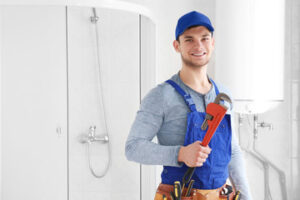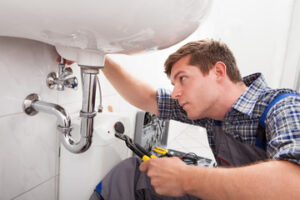Castle Rock Plumbing is the system that brings fresh water in and carries wastewater and waste out. It is regulated by both state and federal agencies to ensure safety and functionality.

A plumbing plan details the supply, drain, vent, and fixture lines of a building. A good plan includes official plumbing symbols, a clear layout, and accurate vertical riser diagrams.
Plumbing is managed through a combination of federal and state regulations, overseeing both professional standards and installation practices. The Environmental Protection Agency sets national standards, while individual states adopt and enforce local codes specific to their needs, such as water quality and seismic safety. These regulations, combined with the testing and licensing requirements for plumbers, are designed to prevent plumbing failures that can compromise public health and safety.
The International Plumbing Code (IPC) is a comprehensive set of regulations that standardizes the design and installation of plumbing systems. It is enforceable by local authorities and provides a framework for safety and efficiency. It also helps prevent water contamination and other issues related to leaks, water pressure, and more. Plumbers must comply with the IPC to ensure their work is safe and up to date with modern safety and environmental standards.
States also set their own standards for plumbing and regulate the qualifications and training of plumbers. Some require certification to work in certain types of buildings or for particular projects, such as new construction or home remodels.
Depending on their jurisdiction, state rules may include mandatory continuing education courses for plumbers and other trade professionals. These courses are intended to keep professionals up-to-date on best practices and new technology. In some cases, a state’s certification is a condition of licensure, so plumbers must renew their credentials periodically to remain licensed.
EPA Regulations
The EPA (Environmental Protection Agency) regulates plumbing systems within public and private drinking water distribution networks. This includes all pipes, fittings and fixtures connecting homes and buildings to the main water system through service lines. Premise plumbing is a major source of human exposure to chemical, radionuclide and microorganism contaminants in drinking water and wastewater. Exposure occurs through inhalation, ingestion and aspiration, or by wound infections. In addition, opportunistic pathogens such as legionella bacteria can be found in premise plumbing. The opportunistic nature of these microorganisms is due to the presence of biofilms which provide them with shelter from environmental stressors and enhanced nutrient availability, as well as easier access to aqueous surfaces for colonization.
In an effort to reduce the amount of lead that enters the drinking water supply, Congress passed legislation in 2011 to limit the maximum allowable lead content for all pipes, pipe fittings and plumbing fixtures in contact with water to a weighted average of 0.25%. This was the first time that a legislative action was taken to address lead in drinking water since the Lead and Copper Rule (LCR) was implemented nearly three decades ago.
During the development of the LCR, it was determined that most lead in drinking water is introduced by corrosion of plumbing materials in homes and buildings. To address this concern, EPA developed the LCR to reduce lead in drinking water through the reduction of corrosion of plumbing products. This was achieved by limiting the amount of lead that is permitted in the wetted surface area of pipes, pipe fittings, plumbing fixtures and solder and flux.
The EPA has also addressed the issue of contaminant persistence by conducting research on contaminant decontamination and the use of model organisms and pathogen surrogates to reduce downstream contamination risks. It is critical for home and building owners to be aware of this research so that they can make informed decisions about cleaning, disinfecting and repairing premise plumbing when necessary.
Plumbing Codes
Plumbing codes are a set of rules and regulations that govern the installation and repair of plumbing systems in residential, commercial, and industrial buildings. These standards are essential for ensuring the safety and functionality of building occupants, as well as protecting the environment. For aspiring plumbers, understanding and adhering to these codes is a vital part of a career in the field. However, they can be challenging to understand, given the technical language and range of topics covered by the various codes and standards. Fortunately, there are many resources available to help plumbing professionals interpret and apply these standards to their work.
The origins of plumbing codes date back to the early days of construction booms in the United States. Before this time, water and sewage conditions were often unsanitary, with rivers and streams full of garbage and sewage. During this period, a great deal of illness and death was caused by diseases associated with poor sanitation and unclean water.
In an effort to improve these conditions, sanitary associations began forming in the 1880s, with the first national organization emerging shortly after that. This group began to write down basic sanitary concepts that would prevent the contamination of drinking water. This became the basis for the first plumbing codes.
These codes were not arbitrary, but rather carefully designed and calibrated guidelines for proper installation of plumbing systems. They established minimum standards that should be adhered to by all plumbing professionals. They also sought to establish best practices in order to avoid structural failures, minimize water waste, and promote system efficiency.
Plumbing code compliance is a necessity for any construction project, whether it be a home remodel, new commercial building, or public works project. Failure to comply with these standards can lead to catastrophic consequences. There have been numerous examples of major disasters resulting from non-compliance with building and plumbing codes, including explosions from improperly vented sewer gas and property damage from flooding caused by a poorly installed drain.
Most states in the US follow a universal plumbing code that is updated every few years to reflect changes in technology and knowledge. However, local counties may have their own codes that must be followed. This makes it important for plumbing contractors to understand the code requirements for their particular area.
Plumbing Inspections
Plumbing inspections help prevent water damage, clogs, and other problems by identifying and addressing issues before they become serious. Homeowners and property owners should consider hiring professional plumbers to conduct regular plumbing inspections of their properties. These inspections can uncover issues like sewage backups, drain line corrosion, and hidden leaks that may cause significant problems down the road. Plumbing inspections also help ensure compliance with local codes and regulations. Inspectors typically check for a variety of issues, including ensuring that shut-off valves can turn on and off easily, checking for leaks in exposed pipes, and testing for proper water pressure and flow.
The type of property and its age can influence how frequently plumbing inspections are required. For example, older homes are more likely to have aging pipes that are prone to failure. As a result, these homes require more frequent plumbing inspections than newer ones. Additionally, residential and commercial properties with a lot of plumbing fixtures, such as multiple bathrooms or kitchens, may need to schedule inspections more often than single-family homes.
In addition to assessing the condition of plumbing fixtures, the inspector will also examine the drainage system and water supply lines. They will look for signs of leaks or water damage, such as damp walls or floors, and inspect the connections between the drainage system and plumbing fixtures. Plumbers will also test the water pressure at all of the fixtures to make sure it is within the recommended range.
Upon completing the inspection, the plumber will provide a written report detailing their findings. This report will list any immediate repairs needed, potential issues to keep an eye on, and general maintenance advice. The plumber will usually also recommend a specific course of action for each issue. For instance, if they find a major leak, the plumber may suggest replacing the entire pipe instead of simply fixing the damaged section.
If you are considering purchasing a new home, it is essential to have the plumbing inspected before finalizing the purchase. This will reveal any potential issues that the seller cannot or will not fix, such as hidden leaks and faulty drainage systems. This will save you from unexpected expenses and headaches after moving in, and it will allow you to negotiate a lower price or request repairs before closing.
